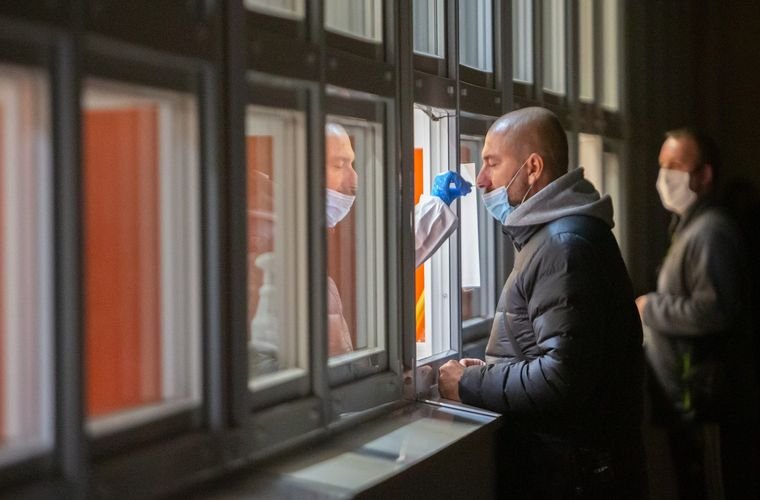To say that the current system of COVID-19 testing is strained within the U.S. would be an understatement, to say the least. From at-home test shortages to long lines of cars waiting for hours in the drive-thru testing sites, people are frustrated by the limitations of the current testing system.
Thankfully, COVID-19 testing may be getting a boost thanks to AI algorithms. Developed by West Virginia University, and recently funded by the NIH, these algorithms will help to optimize where testing needs to happen most to help avoid future outbreaks.
Background: How COVID-19 Testing Has Shifted
Even with coronavirus variants like Delta or Omicron continuing to spread, the rates of testing have decreased across the U.S. According to assistant professor Brian Hendricks at West Virginia University: “In late 2020 and early 2021, when the vaccine came out, there was a one-third drop in testing. That’s a huge issue because a drop in testing hurts your epidemic modeling, your calculation of the basic reproductive number, your ability to plan for research allocation-all of that. So, as the pandemic evolves, we have to keep testing to monitor localized outbreaks and understand when a new variant is introduced.” As areas with the lowest vaccination rates have the highest probability of coronavirus outbreaks, these sites are the targets for the new AI technology.
Analysis: Targeting the Right Areas for Testing
The AI product developed by the researchers was funded by the National Institute on Minority Health and Health Disparities, a division of the NIH. The $2.15 million awarded grant was part of the NIH’s Rapid Acceleration of Diagnostics for Underserved Populations (RADx-UP) initiative, which aims to reduce disparities in minority populations. Using this funding, the researchers developed an AI model to find underserved areas in West Virginia in need of testing.
Because the AI model constantly changed with the data, it proved to be essential for the researchers. “We want to take into account the changes that can occur over time, because we know the pandemic changes with time, right?” explained West Virginia University assistant professor Brad Price. “We’ve seen variants pop up. We’ve seen surges in cases. We’ve seen cases fall off. We’ve seen masks go on and come off. And now talking about booster shots…” The AI model can take all of these different factors into account to pinpoint areas that are COVID-19 hotspots. Once the hotspots are identified, the researchers can work with local communities to get residents tested.
Outlook: How AI can Form Partnerships and Push Forward
Thanks to their AI model, the researchers are able to create partnerships with local areas to help stop coronavirus outbreaks. “We’re conducting interviews to understand-from their perspective-what are the barriers to COVID testing?” said Hendricks. “How does the community feel about COVID testing? What are some things we can do to motivate communities to participate in continued testing? And why is this important?” As many underserved areas have few relationships with scientific institutions, this process creates an important first step in not only helping with COVID-19 testing but allowing a relationship between these two parties to form. As this AI model shows success other researchers will no doubt look to use similar tools to help study and mitigate the spread of the coronavirus.
Kenna Castleberry is a staff writer at the Debrief and the Science Communicator at JILA (a partnership between the University of Colorado Boulder and NIST). She focuses on deep tech, the metaverse, and quantum technology. You can find more of her work at her website: https://kennacastleberry.com/

